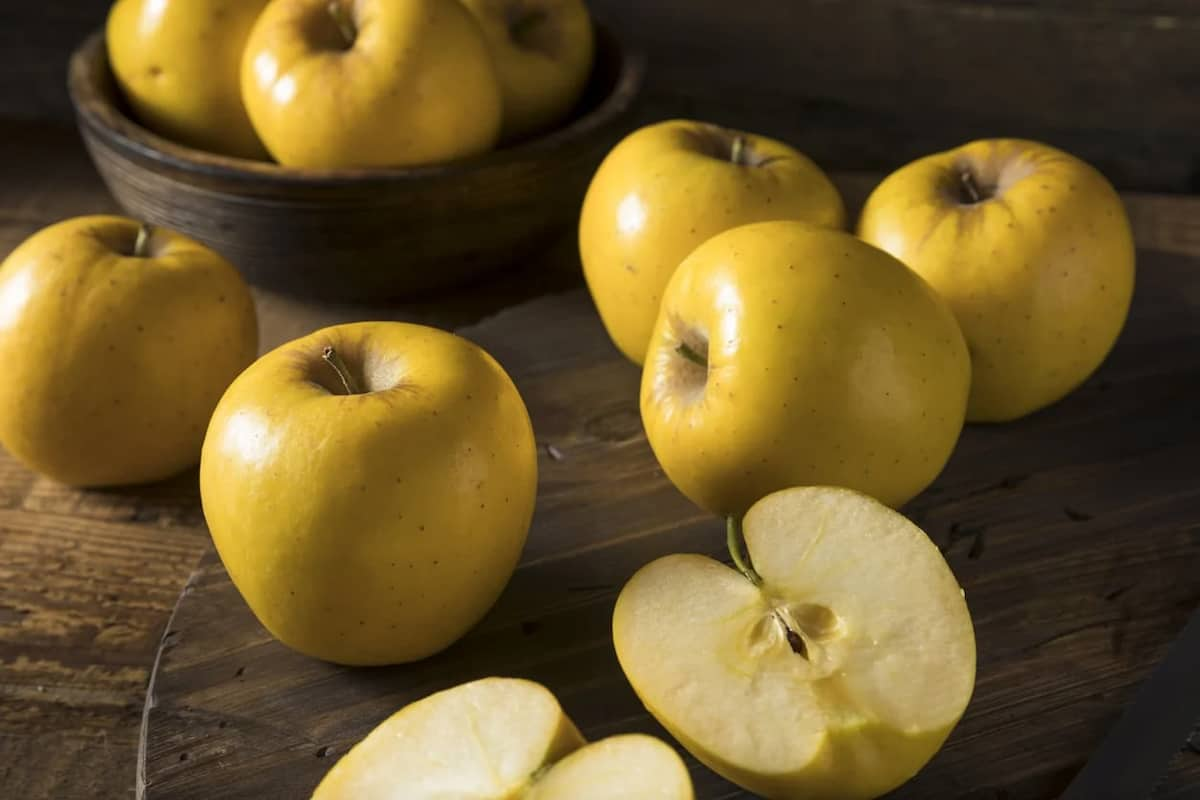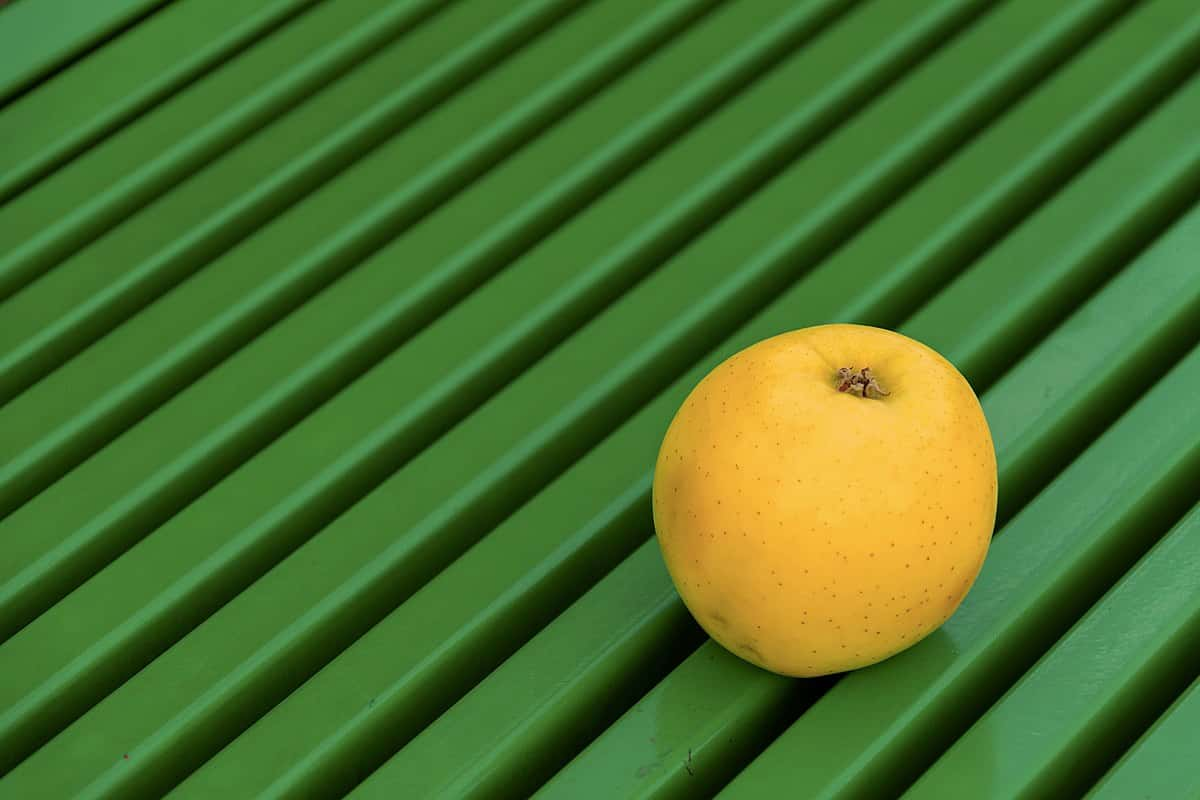Due to the wide varieties of yellow apple trees, one must know them perfectly well to be able to decide which one works better for cultivation.
Yellow Apple Trees
Among all of the yellow apple trees, Golden Delicious is surely the leading one. Moreover, it is also a popular rival for other delicious apples such as Gala, Fuji, and Granny Smith. Like many other types of apples, the seeding of this apple was the result of an accidental breed in the early 20th century. However, it become popular when the Stark Brothers began to use it commercially. They chose the name Delicious for the apple, hoping that it would be as successful as that of the Red Delicious. Thus, the similarity between these two apple names does not come from any kind of real correlation. The tree of the Golden Delicious can be a good decoration for a private garden. Golden Delicious apple trees are self pollinating which makes their cultivation much easier. The height of the tree can read eight to ten feet (2-3 m). This fact would make them suitable trees for many yards and gardens. Golden Delicious apples can only be grown successfully under considerable sunlight and well-drained soil. However, the soil that they are cultivated should not be saturated with water. Doing so would make them rot. For regular growth, they need weekly irrigation, however, if the temperature is higher than usual, you need to water them more frequently. Water the tree thoroughly once a week, or more frequently if the temperature is high, to help it establish and keep it happy all year. They are tolerant to both high heat and cold. The pruning of a Golden Delicious apple tree is so important because they usually render a prolific crop. Within proper condition and good irrigation, a Golden Delicious tree would reach its fruition after four or six years. 
Jonagold Yellow Apple Trees
In this section we will point out the characteristics of the Jonagold Yellow Apple Trees This cultivar is the result of the breed between Jonathan and Golden Delicious Thus, the color of Jonagold apple is yellowish red, having a trace of these two types. The taste of these apples is also sweet, having an aromatic flavor. The tree of this cultivar has a very beautiful appearance, making them a great choice for decorating the border of your orchards. Its tree also is one of those prolific types which makes its pruning essential. The Jonagold apple tree is available in multiple dwarf and semi-dwarf types. The maximum height of the dwarf variety of the Jonagold tree is around 3 meters (10 feet), while the maximum height and spread of the semi-dwarf variety are about 5 meters (15 feet) (10 feet). You have to make enough space for these trees to grow healthy and regularly. These trees are not self pollinating and need two or more other kinds of apple trees for their growth. The trees that are usually used in this respect are Gala or Red Delicious. Just like Golden Delicious, the tree of Jonagold apple also need a large amount of sunlight. For that purpose, it is better to prepare enough space for them and prune them regularly. Maintaining a triangle shape by scaffolding branches below the center stem is essential when pruning your tree. Applying a residual herbicide in the winter will prevent new weed growth from sprouting in the spring. Copper should be used to treat cankers in the spring. To get rid of mites, aphids, and other insects, try using an oil-insecticide combination. This tree spread rapidly throughout North America and Europe due to its hardiness in cold climates and the high quality of its fruit. 
Crispin Yellow Apple Trees
In this section, we will talk about another kind of yellow apple trees, the Crispin. The age of the Crispin tree is almost one century, making it a good rival for old apples such as Red and Golden Delicious. The Crispin apple tree was the offspring of a breeding between an American and a Japanese tree. The Golden Delicious apple variety was successfully crossed with the Indo apple type in 1949, and the resulting hybrid was grown for the first time that year. Although the Crispin Apple tree is native to what is currently known as Aomori Prefecture in Japan, it is named from a different historical classification. This is because a historical figure other than Crispin was named after the tree from which apples are harvested. The region's new name, Aomori Prefecture, symbolizes its newly recognized status. Crispins are no different from any other kind when it comes to apple tree cultivation. To maintain it healthy, allow it to spread out to a width of 12-15 feet (3.5-4.5 m) and have enough of breathing space. Ensure appropriate drainage and that the tree receives at least half a day of sunlight per day. Plant it adjacent to another apple tree for the best pollination. 
Blondee Yellow Apple Trees
We will try to talk about another one of yellow apple trees, named Blondee. Blondee® apples are a large variety with an average diameter of 7 to 8 centimeters and a uniform, round to conical shape with little ribbing and a tapered base. The skin of the apple is smooth but rough in places (especially near the stem) and speckled with a few tan lenticels. On the surface, a gentle golden tint can be seen, with a greenish or slightly reddish-orange tinge depending on how much time is spent in the sun. The flesh behind the papery surface is hard, gritty, and aqueous, with a crisp and crunchy texture and a color ranging from white to yellow. The slow-browning, bruise-resistant flesh protects a small, central core holding tiny, black-brown seeds. Blondee® apples are mellow and sweet with a trace of acidity; they also feature melon, honey, and spice undertones. As a reputable company, we pledged ourselves to provide our customers with fresh and high quality fruits. For more information please fill out a form on our website. 

0
0